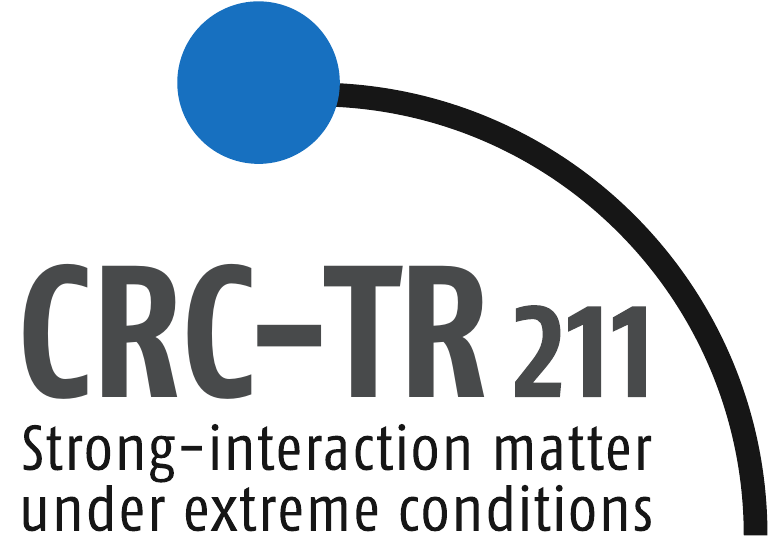\( \newcommand{\dd}{\mathrm{d}} \) \(
\DeclareMathOperator{\sign}{sign} \) \(
\newcommand{\pvec}[1]{\vec{#1}^{\,\prime}} \) \(
\newcommand{\R}{\mathbb{R}} \)
\( \newcommand{\dd}{\mathrm{d}} \) \(
\DeclareMathOperator{\sign}{sign} \)
 Transport Meeting
Transport Meeting
Venue: Physics Building, Max-von-Laue-Str. 1, PHYS 02.116
Time: Thursday, January 23, 2:15pm (s.t.)
Contact: hees@itp.uni-frankfurt.de
Untangling the evolution of heavy ion collisions using direct
photon interferometry
Oscar Garcia-Montero
We investigate the measurement of
Hanbury Brown-Twiss (HBT) photon
correlations as an experimental tool to discriminate different sources
of photon enhancement, which are proposed to simultaneously reproduce
the direct photon yield and the azimuthal anisotropy measured in
nuclear collisions at RHIC and the LHC. To showcase this, we consider
two different scenarios in which we enhance the yields from standard
hydrodynamical simulations. In the first, additional photons are
produced from the early pre-equilibrium stage computed from the bottom-up thermalization scenario.
In the second, the thermal
rates are enhanced close to the pseudo-critical temperature $T_c
\approx 155 \; \text{MeV}$ using a phenomenological ansatz. We study
also the feasibility
of measuring a direct photon HBT signal in the upcoming high-luminosity
LHC runs. Considering only statistical uncertainties, we find that with
the projected $\sim 10^{10}$ heavy ion events a measurement of the HBT
correlations for $k_{\perp}<1 \; \text{GeV}$ is statistically
significant.
Nuclear Physics Colloquium Homepage
 Transport Meeting
Transport Meeting
 Transport Meeting
Transport Meeting